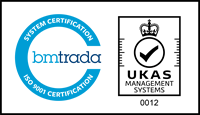Blog
Guest Blog: Drive and support workplace inclusivity with reward and recognition
Posted on: Wednesday September 07, 2022

Guest blog authored by Sarah Lardner, Director of Business Innovation at Innecto Reward Consulting, part of the Personal Group family.
Celebrating 20 years in business this year, Innecto is a pay and reward consultancy that provides advice, support and practical help to solve any challenge relating to attracting, retaining and motivating people.
For a company to get reward and recognition right in a way that fosters workplace inclusivity, its policies and practices need to encompass everybody regardless of age, background, gender or ethnicity. Everyone should be treated the same, with no bias. It’s a very broad piece to address.
Policy on reward should be driven by the right data being analysed by professionals on a continuous basis. Only by doing this will you know what kind of benchmarking - geographical, skills-based, role-based – is best for you. It’s crucial to get right for everyone and you can read more about fair and equitable policymaking in my white paper Borderless: Talent and Salary alignment.
Beyond the Superstars
There is a real power that comes from a company getting Recognition right. A well-thought-out scheme tailored to a specific business and employees can create genuine buzz and excitement, drive contagious behaviour, and help forge cohesion. You can be more creative with recognition than you can through base pay and there’s a genuine superpower to a boss or a manager finding the right way to say ‘Thank you' simply.
Some companies get creative and use ‘Dream Balls’ or put larger amounts of money into recognition schemes aligned to the culture and corporate objectives. If they’re truly inclusive they inevitably look beyond the obvious contenders by asking questions: Who are our superstars who we recognise through bonuses already? Who are the people who contribute without it linking back to measured performance or KPIs? What are those people doing? Are they supporting their colleagues? Are they doing things for the community? Have they created something innovative or identified something that adds value? Are they getting great customer feedback that may not always get back to management?
Financial investment obviously helps but the more thought and time that goes into it, the more engagement and excitement the scheme will create because it will be more tailored to the business. If it’s well thought through, it will also normally include good communication, which also drives engagement.
Remember too that not everyone is comfortable being rewarded in front of colleagues. People from different demographics may be culturally sensitive. Quiet or private people may prefer to keep their head down without the excruciating embarrassment (for them) of having something posted about them. How do you reward these people? There are other sensitivities at play too: without due care, someone may be rewarded with wine when they can’t drink, or chocolate when they're struggling with their weight and on a diet. For that engagement to be truly inclusive, you need a constant sense check.
The crucial role of leaders
To recognise all people fairly, crucially you also need your leaders and line managers to be advocates. They need to set the tone, buy into the power of the scheme and understand the benefits of return on investment. And your line managers need to understand – and pass on up and down – what is an appropriate reward for their team or an individual.
Leaders should also allow for anonymous input and feedback into these schemes. We have found that employees will often say in a workshop that they want one kind of recognition (for example more time with senior management) when, actually, they would much rather receive something tangible like money or vouchers.
Involving line managers up and down the business will also ensure that any scheme you settle on is applied and analysed correctly and consistently through constant checks: who is giving recognition? Who is receiving it? Are there patterns of demographics? If so, what do they mean? Are certain departments totally inactive, or over-represented? Are youngsters more engaged, for example, because the scheme relies on a social platform that might exclude older people? Or is a more traditional scheme leaving younger employees cold?
Only by asking these questions can you start to understand the strengths and weaknesses of what you’re doing and use that information to plan, create and communicate a scheme that resonates with everybody, and allow you to continuously monitor and measure success. If you do that, you’ll be using recognition to inspire people to uphold the company’s culture. Every day.
If you haven’t already, don’t forget to subscribe to our blog for weekly thought leadership straight to your inbox.
Cost vs Value – What Really Matters in Health Benefits?
When it comes to creating employee health benefits, there’s always a tug-of-war between keeping costs low and focusing on the actual value those benefits bring.
Posted on: 11 April 2025 by Andrew Walker, New Business Development Director
Top Tips to Improve a Misfiring Recognition Strategy
Whether you’re a professional footballer, engineer or care worker, happiness at work relies on feeling valued, appreciated and respected.
Posted on: 28 March 2025 by Andrew Walker, New Business Development Director
Brace Yourselves: Reward Storm Incoming
In even the most optimistic assessment of the current situation, it is hard to foresee a situation where a substantial portion of workers are not left underwhelmed by their pay offers in 2025.
Posted on: 13 March 2025






